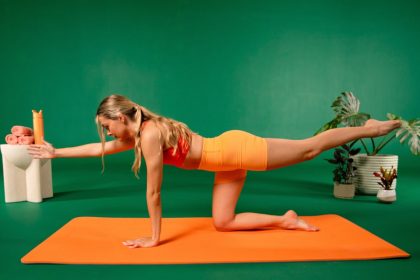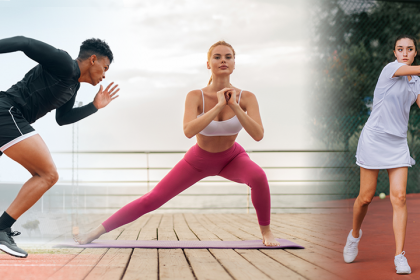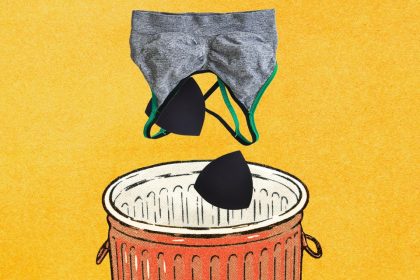Then there are the performance benefits too. Many gymgoers also perform dead hangs to work on their grip strength. “It’s honestly one of the simplest, most effective ways” to build it, Sanchez says. Beefing up those tiny muscles in your hands, wrists, and forearms can pay off in both the weight room (since you’ll be better able to maintain your grasp on heavy free weights, say, like when you’re deadlifting) and daily life (like when you’re trying to pry open that jar of pasta sauce).
And if you’re working on your pull-ups, Sanchez says these are a great way to practice. Just by hanging out in an isometric (a.k.a. stationary) hold, you’ll strengthen the muscles in your shoulders, back and core, and all the way down your arms to your fingers—exactly what you’ll need to finally pull off your very first pull-up.
But not all dead hangs are created equal.
As straightforward as this move may seem, there are actually a few different ways to approach it—which can potentially change what you get out of the exercise.
You don’t have to jump up to grab the bar.
For beginners, Dr. Van Den Meerendonk suggests using a bar at a height that’s easy to grab onto. Maybe it’s lower down (say, set up on an adjustable Smith machine) or maybe you’re standing on a step to more easily reach a pull-up station. Either way, “when you’re reaching up, you’re already reaching the bar,” he says.
From there you can just bend your knees to get into the dead hang, keeping your toes on the floor to support some of your weight. This will give you control over how much stress you’re putting through your shoulders. Alternatively, Sanchez says you can loop a long resistance band around the pull-up bar, then step into it for a banded hang so it takes some of your weight. Once you’re comfortable with one of these versions, then you can work on jumping up to catch the bar above you.
Letting go of tension in your shoulders will increase the stretch in that joint.
If you’re mostly looking to loosen up your shoulders in your dead hang, Dr. Van Den Meerendonk recommends this modification: Once you’re in the position, slowly release the muscles in your shoulder girdle to sink down lower and increase the traction in the joint. “As you relax the shoulder muscles, you’ll notice your head—and entire body— dropping down,” he says, adding that you’ll feel a stretch in the joint as you do so. “Little by little does the trick.” Just remember to keep your core tight to support you—and maintain your tight grip on the bar.
Or let your core relax a bit for a lower back release.
Alternatively, if you’re doing a dead hang to loosen up your lower back, you’ll want to try to relax your core. While holding tight onto the bar with your hands and keeping your shoulders engaged, play with letting your core muscles start to let go. “That allows for your legs to drop further and for your low back to traction,” Dr. Van Den Meerendonk says.
For long-term benefits, make dead hangs a regular part of your warm-up.
A dead hang is gentle enough on your body that you can do it every day. It can be especially effective as part of a warm-up to open up and engage your upper-body muscles, switching on that all-important mind-body connection before moving on to more intense strength training. “When you have to hold your body weight up, you become much more aware of what muscles are being engaged, “ Sanchez says. “So it’s a good way to train how the back should be feeling in the correct position.” He recommends starting with two or three 10-to-15-second holds, and working your way up to 45 to 60 seconds at a time.







